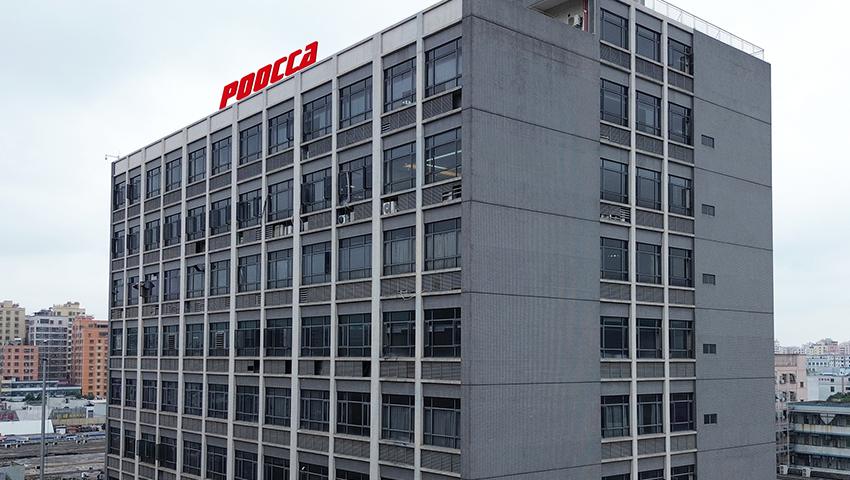Menu
Close
Menu
Close
Poocca Hydraulic Manufacturer specializes in the production of Hydraulic Cylinders: Single Acting Hydraulic Cylinders, Double Acting Hydraulic Cylinders, Multi-Stage Telescopic Hydraulic Cylinderspoocca, Dump Truck Hydraulic Cylinders. Material requirements for the production of POOCCA hydraulic cylinders typically include high-strength steel for the cylinder barrel to withstand high pressures, durable seals to prevent leaks, and corrosion-resistant materials to ensure longevity and reliability under a variety of operating conditions. Able to provide high force output, precise motion control, compact design and versatility in a variety of industrial and mobile applications. Used in many fields such as loaders, garbage trucks, excavators, sanitation trucks, mining machinery and dump trucks. 27SiMn, 40CrMo, ST52, 45# steel pipes or bars are available.
Our manufacturing facility houses many CNC machines capable of producing high-quality hydraulic components and replacement parts.

POOCCA Hydraulic (Shenzhen) Co., Ltd. was established in 2006 and has four companies in Hong Kong, Guangdong, Jiangsu and Zhejiang. We are a comprehensive hydraulic service company specializing in the research and development, manufacturing, maintenance and sales of hydraulic pumps, motors, valves and related parts. With extensive experience in providing power transmission and drive solutions to hydraulic system users around the world, we have a strong reputation in the industry.
Over the past two decades, POOCCAHydraulics has continued to grow and innovate in the field of hydraulics. We have won the trust of domestic and foreign manufacturers and established strong corporate partnerships. Our annual export volume is up to US$16 million and exported to more than 100 countries. We have established long-term and stable cooperative relationships with dealers in more than 75 countries, including the United States, Indonesia, Mexico, Thailand, Russia and Brazil.
A hydraulic cylinder is a device that converts liquid pressure into linear or rotary motion. The hydraulic cylinder consists of a cylindrical housing, a piston or piston rod that can move within the housing, and two end caps. When hydraulic oil is forced into one end of the hydraulic cylinder under the action of a pump, it pushes the piston toward the other end, creating mechanical movement.
The design of a hydraulic cylinder allows it to perform an extension (pull-out) movement when it receives high-pressure fluid from a hydraulic pump, and a retracting (return) movement when pressure is released or applied to the opposite side. This ability makes hydraulic cylinders very useful in applications that require large amounts of force and precise control, such as in construction equipment, manufacturing machines, aerospace control surfaces, and automotive braking systems.
Poocca’s hydraulic cylinders can be single-acting or double-acting. Single-acting hydraulic cylinders can only move in one direction with hydraulic force, while double-acting cylinders can move in both directions with hydraulic force. In addition, there are retractable hydraulic cylinder designs, which are composed of multiple nested cylinders and can be greatly adjusted in length, making them ideal for space-constrained applications.
Hydraulic cylinders are popular in many applications due to their high force output, compact design and ability to operate reliably in harsh environments.
Working principle and structure of hydraulic cylinder
The working principle of the hydraulic cylinder is based on Pascal’s principle, that is, the liquid in a closed container transmits force without changing its size under the action of pressure. When the pressure oil in the hydraulic system enters the left chamber of the hydraulic cylinder, this pressure pushes the piston to move to the right, thereby outputting force or motion. When the piston moves to the right, the oil in the right chamber of the hydraulic cylinder will be discharged through the piston rod and flow to the oil tank. If the flow or pressure of the input or output oil is changed, the reciprocating motion of the piston rod can be achieved.
The structure of a hydraulic cylinder usually includes cylinder barrel, piston, piston rod and end cover. The cylinder barrel is the main part of the hydraulic cylinder. It is usually precision welded from thick-walled steel pipes with a smooth interior to ensure smooth flow of oil. The piston is installed in the cylinder barrel and sealed with the inner wall of the cylinder barrel through a piston sealing ring. The piston rod passes through the end cover and is sealed with a sealing ring to prevent oil leakage. The end cover is connected to the cylinder barrel through screws to form the complete structure of the hydraulic cylinder.
In order to ensure that the hydraulic cylinder can achieve reciprocating motion, it is usually equipped with some auxiliary components, such as guide rails, guide sleeves, sealing rings, etc. The function of these auxiliary components is to reduce friction, improve sealing performance and increase stability.
Hydraulic cylinders are used in various machinery and equipment, such as machine tools, presses, injection molding machines, ships, etc. In these applications, hydraulic cylinders are often required to withstand large loads and pressures, so appropriate materials and structures need to be selected to ensure their stability and reliability. In addition, in order to meet specific motion requirements, hydraulic cylinders also need to be specially designed and manufactured.
POOCCA Hydraulic Manufacturer has many types of hydraulic cylinders designed for different applications and requirements. Although there are many designs and configurations, poocca will highlight four common types of hydraulic cylinders for you:
Single acting cylinder:
Single-acting cylinders provide power in only one direction, extending or retracting. It uses hydraulic pressure to move the piston in one direction, while return movement is usually achieved by springs, gravity, or external force. These cylinders have a simple design with fewer seals, making them more economical and less prone to leakage than double-acting cylinders. However, they require a continuous supply of pressurized fluid to maintain the extended position.
Double acting cylinder:
Double-acting cylinders can move in both directions (extend and retract) under hydraulic pressure. They have two working ports, one for each direction of movement, allowing hydraulic oil to exert force on both sides of the piston. This design allows for faster cycling and more precise motion control. Double-acting cylinders are typically used in applications that require high forces and speeds, such as industrial machinery and heavy equipment.
Telescopic cylinder:
Telescopic cylinders, also called multi-stage or nested cylinders, have a series of nested tubes that telescope in and out like a telescope. Each tube is connected to the next via a seal, allowing the cylinder to extend and retract without the need for longitudinal mountings or guide rods. This design makes telescopic cylinders ideal for applications where space is limited, such as construction equipment and vehicle lifting systems.
Rotary actuator:
Although not strictly speaking a “cylinder,” rotary actuators are included in the category of hydraulic cylinders due to their function of converting hydraulic power into motion. Rotary actuators provide rotational motion rather than linear motion. They consist of a shaft that rotates within a housing under hydraulic drive. Rotary actuators are used in applications requiring rotational motion, such as steering systems and robotic arms.
So the four types of POOCCA hydraulic cylinders include single-acting cylinders, double-acting cylinders, telescopic cylinders and rotary actuators. Each type has its own unique capabilities and is suitable for specific applications based on force, speed, space efficiency and direction of motion requirements.
Poocca’s single-acting cylinder is a fluid-powered cylinder that uses a single chamber or compartment to produce motion. In a single-acting cylinder, fluid enters one end of the cylinder and exits the other, causing the piston to move in one direction. The piston is mechanically connected to the output shaft or connecting rod, which converts the piston’s linear motion into rotational motion and vice versa.
The term “single acting” means that the cylinder has only one active chamber into which fluid is introduced to produce motion. The other end of the cylinder is either open to the atmosphere or connected to a reservoir to allow the piston to move freely without applying any pressure.
Single-acting cylinders are typically used in applications that require one-way motion, such as conveyors, elevators, and machine tools. They are also used in situations where the load may be unbalanced or where a fail-safe mechanism is required. If the power supply fails or becomes clogged, the cylinder will still operate in the single-acting direction, allowing continued operation or safe shutdown.
Single-acting cylinders offer several advantages over double-acting cylinders, including simplicity, reduced cost, and ease of installation. They are also less complex and have fewer moving parts, which results in lower maintenance costs and longer service life. However, they do not offer two-way movement and require external power or compressed air to operate.
If you want to know more, please send your request to poocca, and we will provide you with relevant quotations, parameters and other information as soon as possible.
A double-acting cylinder is a hydraulic cylinder that can provide force in two directions (extension and retraction) due to hydraulic pressure applied to both sides of the piston. Unlike single-acting cylinders, which rely on external forces such as springs or gravity to move in one direction, double-acting cylinders use hydraulic pressure to power both strokes.
In a double-acting cylinder, there are usually two working ports: one for the extension stroke and the other for the retraction stroke. When hydraulic fluid is introduced into one side of the cylinder, it pushes on the piston, causing the cylinder to extend. Instead, when fluid is introduced to the opposite side, the piston is pushed in the opposite direction, causing the cylinder to retract. This action allows precise control of the cylinder’s movement and enables faster cycles compared to single-acting cylinders.
The design of a double-acting cylinder includes a seal that separates the two chambers within the cylinder, allowing pressure to be applied independently to each side of the piston. These cylinders can be configured with different end-of-stroke options, such as cushioning to reduce end-of-stroke shock, or having a locking mechanism to hold the cylinder in place when the desired stroke length is reached.
Double-acting cylinders are commonly used in a variety of applications that require precise control, high forces, and fast cycling. They are an important component of many industrial machines, including presses, injection molding machines, lifting equipment and material handling systems. The ability to generate motion in both directions makes them particularly versatile and suitable for complex operations requiring controlled linear motion.

POOCCA Hydraulics is a powerful hydraulic enterprise integrating R&D, manufacturing, sales and maintenance. Its products are exported to more than 120 countries. Its quality, price and service are deeply recognized and trusted by customers.
Welcome to contact us using WeChat

Welcome to contact us via whatsapp
